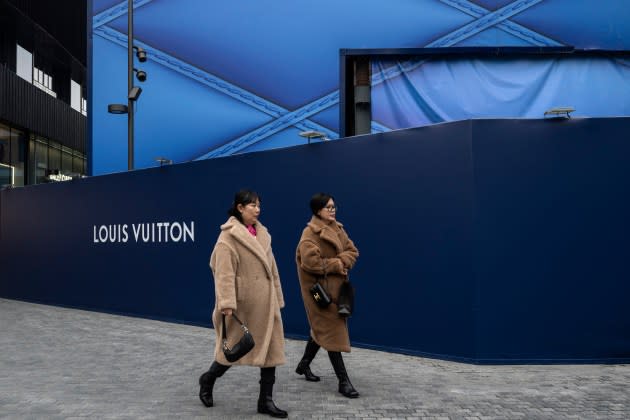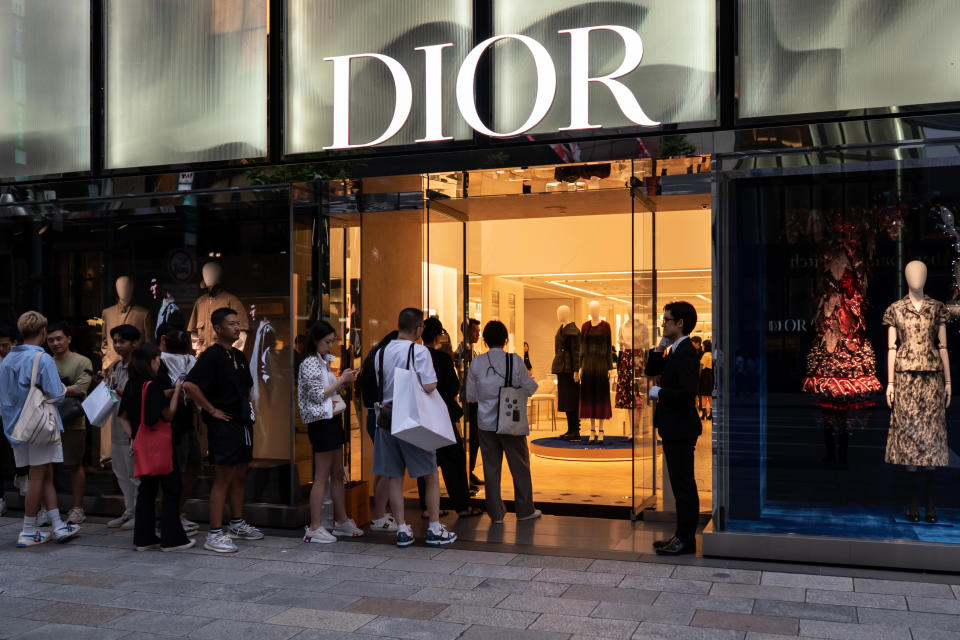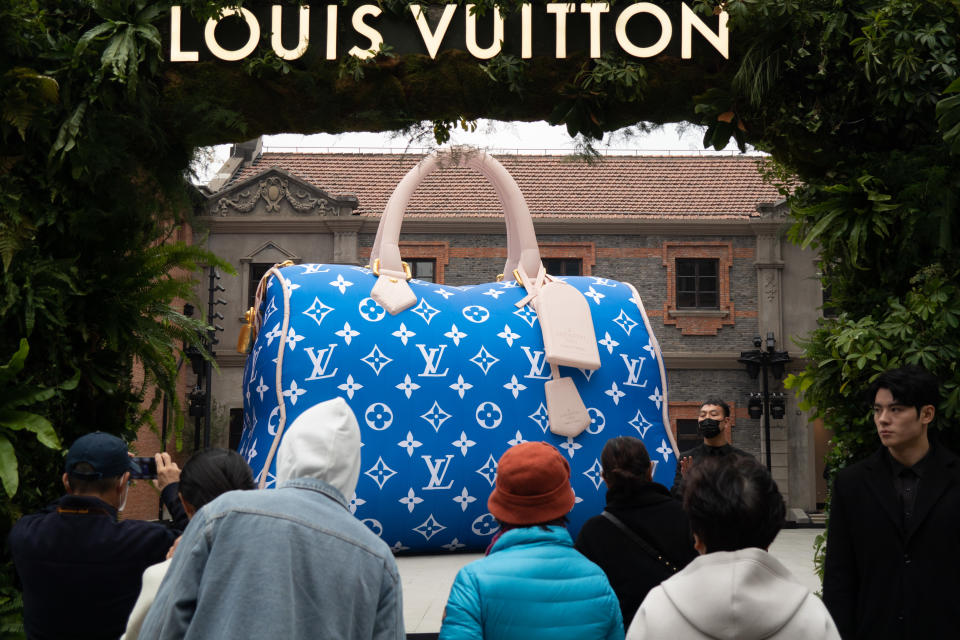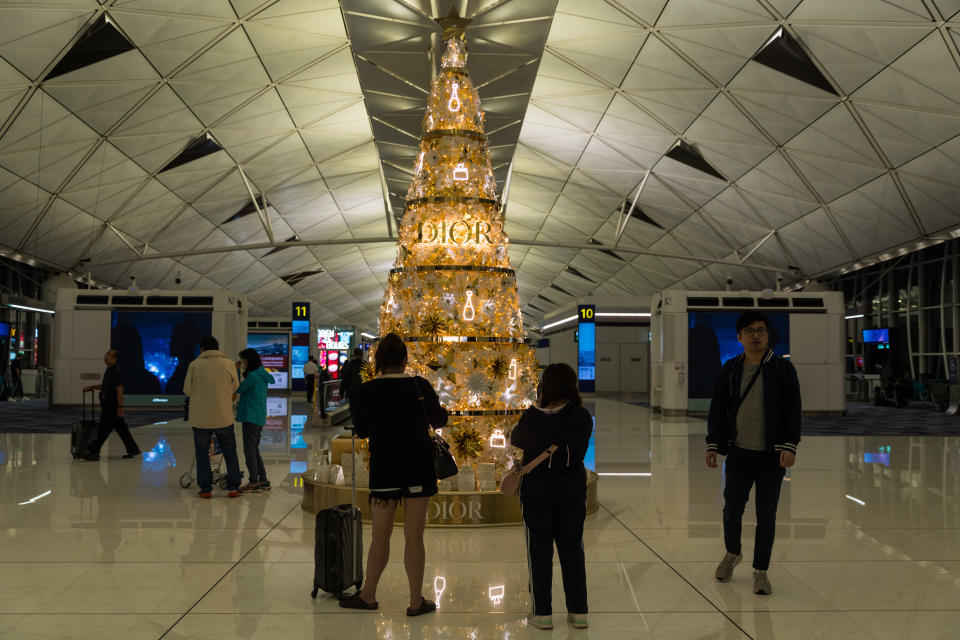Top 10 Stories of 2023: Navigating China’s Luxury Slowdown

How to build growth momentum in the Chinese luxury market as it enters its second year of post-COVID-19 reopening is the question on every executive’s mind.
During the COVID-19 years and post-pandemic 2023, aggressive pricing strategies helped drive volume growth for top-notch luxury brands, such as Louis Vuitton, Chanel and Hermès.
More from WWD
But that price-supported top-line growth won’t be so sustainable in 2024.
“Pricing can only be up, in my view, low-single digits for the next year for main companies. Of course, the volume could also be quite weak,” said Carole Madjo, head of European luxury goods research at Barclays Equities Research, during a recent roundtable on Chinese consumer demand and demographics.
“When you look at macro indicators, basically all signs are going toward the negative spectrum, with no indicator of short-term positive surprises on spending,” added Madjo, who forecasts the China market will register “at best midsingle-digit growth” in 2024.
By nationality, Bernstein‘s Luca Solca believes that Chinese luxury consumption will grow 15 percent in 2024, with U.S. and European consumers remaining “flattish.”
According to HSBC‘s forecast, major luxury companies may expect on average 8 percent growth in 2024 and 2025. “By region, we expect Asia excluding Japan and excluding China to be the main driver, followed by Japan. Both regions being driven by Chinese tourism flows,” wrote HSBC in a November report titled “Goodbye Stellar Growth.”

China’s demographic shift, such as the declining birth rate, and real estate woes could spell trouble for discretionary sectors such as spirit and automobiles, but the luxury industry tends to be more resilient in the long run — the next China is China, as LVMH group president of Greater China Andrew Wu put it at the WWD/SKP Global CEO Summit in Chengdu last October.
“In China, luxury companies are trying to attract more and more younger consumers because once they buy luxury goods, they tend to be quite sticky,” said Majole, who believes the average Chinese luxury shopper can have on average a 20- to 30-year cycle, tending to increase spending as they accumulate wealth.
Top 10 Stories of 2023 |
|---|
Entertainment and Fashion Converge |
“Weakening birth rates and lower marriage rates also mean that people will have more money to spend on themselves,” said Majole.
Figuring out what younger and trend-sensitive Chinese consumers want and treating them like “kings and queens” is one way to gain brand momentum.
According to data from China Trading Desk, a luxury consulting agency based in Singapore, Chinese Millennials, or those 25- to 40-years-old who can be loosely grouped as the “new middle class,” reached 245 million as of July 2023. This cohort will constitute the majority of luxury consumption in the country.
“We believe that they are more value driven, not money driven despite upcoming headwinds,” explained Subramania Bhatt, China Trading Desk chief executive officer.
“They do not mind spending more money versus buying more cost-effective products,” Bhatt added. “This means brands need very strong messaging for people to buy into your brand, your purpose.”
Luxury players can also look to China’s growing silver hair population to gain new market share.
“People in their 50s and 60s still have money and can still buy luxury goods. They are a bit untouched in China, be it with gifting for the kids or grandchildren,” Majole explained.

“You can find ways to sell more bags to people in the longer run,” she added.
As Barclays’ equity analyst Wendy Liu explained, luxury landlords are also worried about “the affluent luxury consumer,” including business owners and high-income professionals in the technology and financial sector, whose short-term confidence is being overshadowed by bonus cuts and layoffs.
“The people at the very top, the VVIP and the VIPs, are doing fine. They are now able to spend overseas, but they are actually spending a lot of money in the domestic market. The aspirational consumers are growing a bit slowly, but that’s been the case from the start of the year,” Liu added.
However, Julie Petit, partner at Mazars, a U.S.-based advisory firm, believes that brands can continue to attract aspirational shoppers by enhancing product mix.
“Instead of buying an expensive bag or clothes, they might just buy accessories, fragrances or cosmetics that might be less expensive; then they still have the feeling of consuming the brand. That’s a nice way for the brand to still stick into the mind of the shopper,” Petit explained.
On the travel retail front, last month Chinese tourism spending on luxury goods recovered to 82 percent of November 2019 levels, according to Global Blue.

Due to favorable exchange rates, Japan has posted the highest tax-free spending recovery in Asia Pacific, up 220 percent year-over-year in November, based on Global Blue data.
As Malaysia and Singapore unveiled 30-day mutual visa exemptions — the latter to be implemented in early 2024 — travel retail in top destinations in the continent could gain momentum.
As airline capacity steadily increases, Chinese spending in Continental Europe reached 65 percent of November 2019 levels last month, according to Global Blue data.
“While Chinese consumers have come back, [it is] with less of an overwhelming gusto,” cautioned Bernstein’s Solca on the return of Chinese tourists to key European luxury hubs.
“Is the money being spent on luxury products? Or luxury hotels — Accor would benefit — and experiences? If it’s on the latter two, the luxury recovery will be delayed,” added Solca.
“When we look at airport duty-free sales, the figures are not really back. More are just buying fashion-related accessories,” Petit said.
Best of WWD

